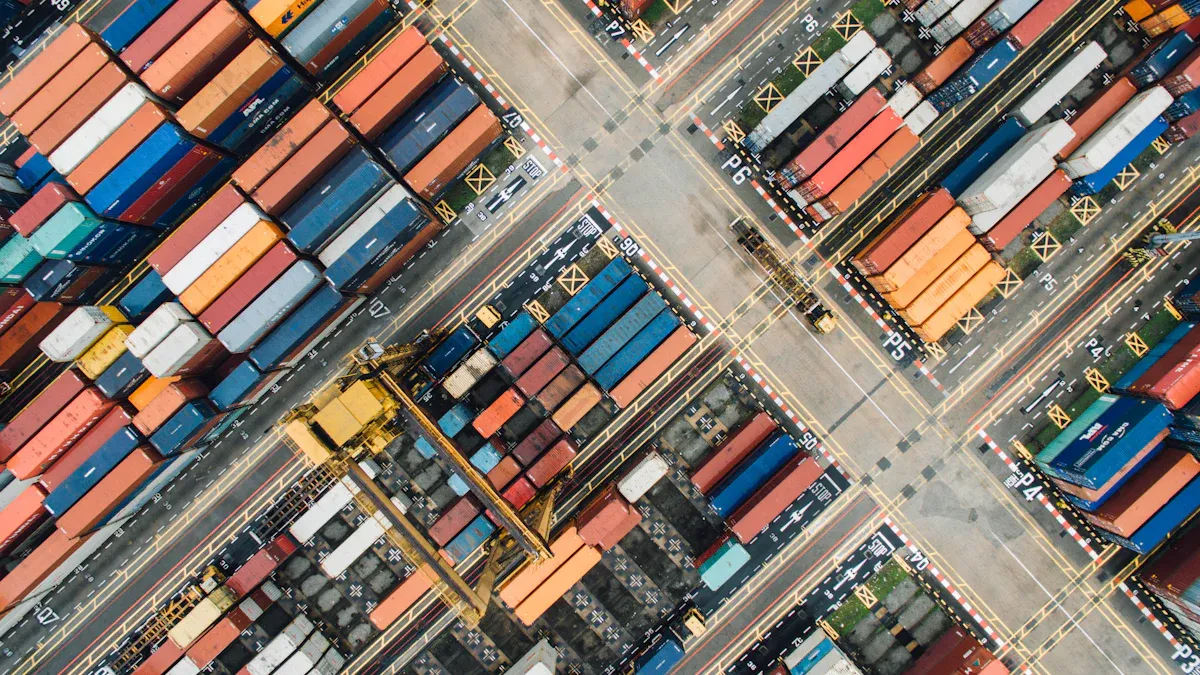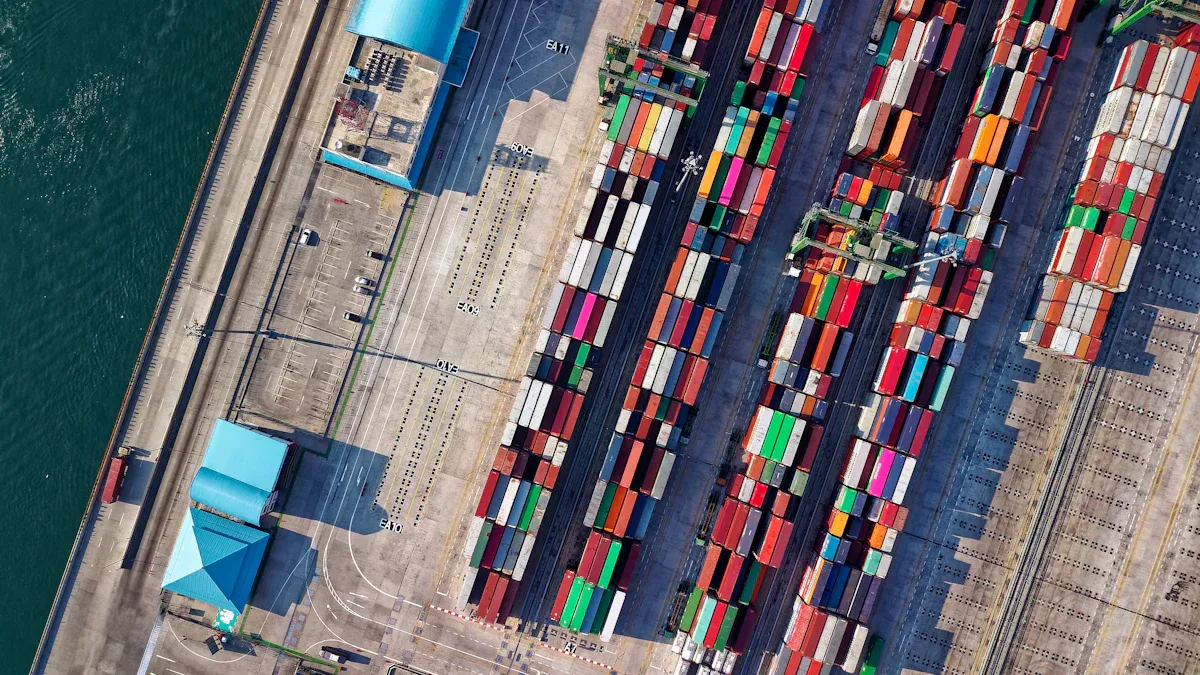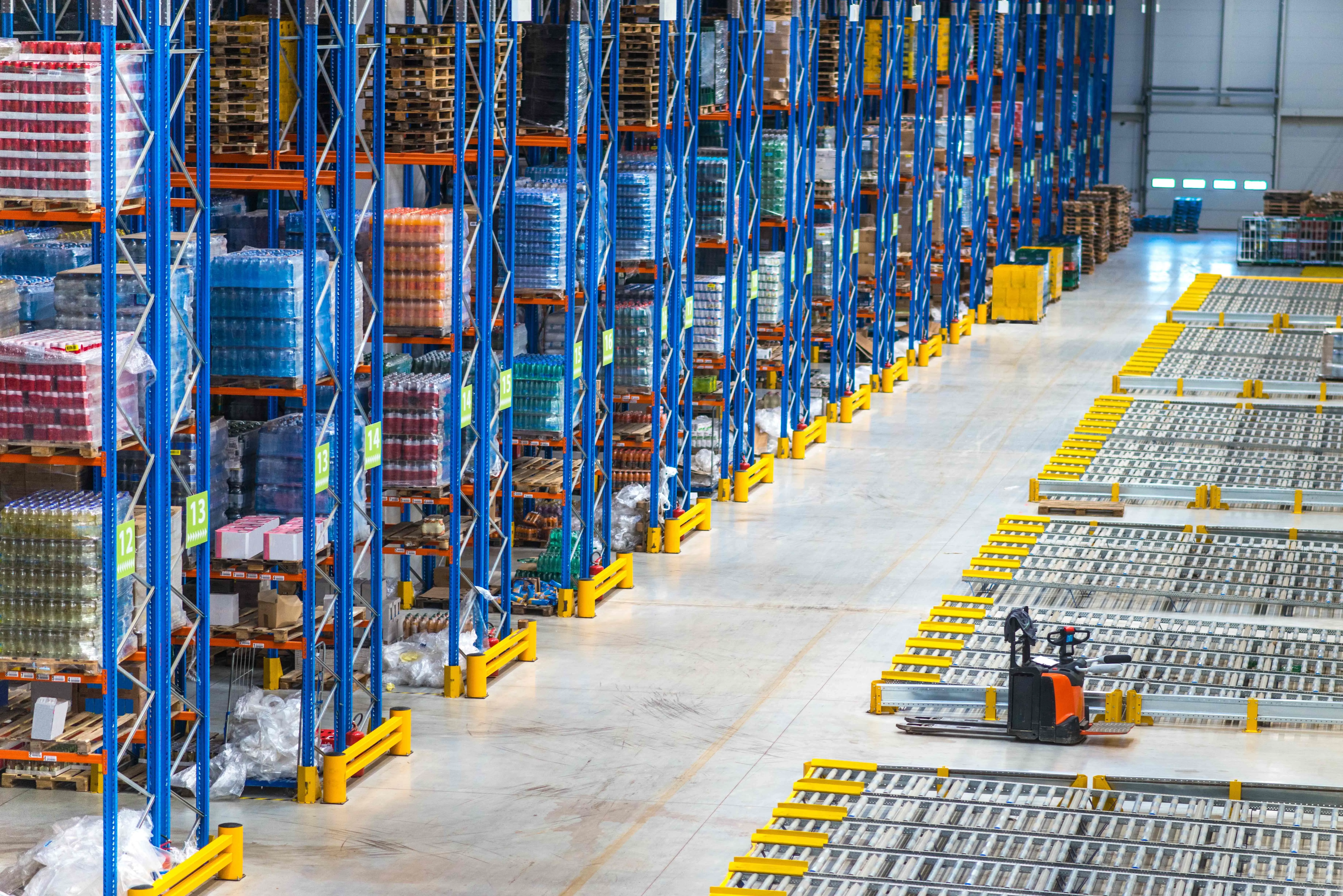How AI and IoT Are Shaping the Future of Smart Logistics

Imagine a world where your packages arrive faster, disruptions are minimized, and every step of the journey is visible in real time. That’s the power of AI and IoT in logistics today. These technologies are transforming how goods move, making operations smarter and more efficient.
Here’s a quick look at the impact:
Statistic Description | Percentage/Impact |
|---|---|
Companies adopting automated transportation technology | |
Reduction in logistics costs by AI adoption | 15% |
Optimization of inventory through AI | 35% |
Improvement in service levels due to AI | 65% |
Logistics companies planning to integrate IoT | 80% |
Decrease in supply chain disruptions with digital twins | 30% |
With AI and IoT, you get real-time insights, predictive analytics, and IoT-enabled tracking devices that improve delivery accuracy. These tools make smart logistics a game-changer, helping businesses stay ahead in a fast-paced industry.
Key Takeaways
AI and IoT help logistics with live tracking and predictions. This makes deliveries quicker and lowers expenses.
Using AI and IoT helps make better choices and work smarter. Businesses can plan routes and handle stock more easily.
Spending on AI and IoT saves money and keeps customers happy. It also makes logistics clearer and more dependable.
The Role of AI and IoT in Smart Logistics

How AI and IoT Drive Innovation in Logistics
AI and IoT are transforming logistics in ways you might not have imagined. These technologies work together to make operations faster, smarter, and more efficient. For example:
Real-time tracking gives you visibility into where your goods are at any moment.
Predictive analytics help optimize delivery routes, saving time and fuel.
IoT sensors monitor conditions like temperature to ensure goods stay intact.
AI also uses historical data to predict demand and identify potential bottlenecks. Meanwhile, IoT devices continuously collect data on location and other parameters, improving inventory management and delivery accuracy. Together, they even optimize warehouse layouts and staffing schedules, reducing waste and maximizing resources. This level of innovation enhances transparency and creates a better experience for customers.
The Synergy Between AI and IoT in Logistics and Transportation Management
AI and IoT combined create a powerful duo in logistics and transportation management. IoT devices provide real-time data, while AI analyzes it to make smarter decisions. For instance:
AI uses IoT data to forecast demand and optimize routes.
IoT-enabled tracking ensures shipments are monitored, improving efficiency.
AI-driven analytics predict delays and allocate resources to keep deliveries on time.
This synergy not only streamlines operations but also reduces costs and enhances customer satisfaction. By integrating these technologies, you can achieve better compliance, agility, and risk management.
JUSDA’s Approach to Integrating AI and IoT in Supply Chains
JUSDA takes AI and IoT integration to the next level with its intelligent AI solution, JusLink. This platform combines artificial intelligence and the Internet of Things to provide real-time supply chain management. It offers tools for demand forecasting, inventory tracking, and route optimization. With JusLink, you gain full visibility into your supply chain, allowing you to monitor every step and prevent disruptions.
JUSDA also uses AI to analyze data patterns, improving decision-making and reducing costs. Its IoT-enabled systems ensure transparency and efficiency, making it a leader in smart logistics. Whether you're managing warehouses or coordinating global shipments, JUSDA’s solutions help you stay ahead in logistics and transportation management.
Key Applications of AI and IoT in Logistics
Real-Time Tracking and Monitoring with IoT Sensors
IoT sensors have completely changed how you track shipments. These devices, like RFID tags and GPS trackers, provide real-time location updates for vehicles, containers, and even individual packages. You can monitor every movement and condition of your goods, ensuring they stay safe and on schedule.
For example, IoT sensors continuously collect data on temperature, humidity, and motion. This information gets transmitted to centralized systems, giving you full visibility into your supply chain. If something goes wrong, like a delay or a temperature spike, you can act immediately to fix it. This level of real-time tracking helps you maintain product quality and avoid losses.
Predictive Maintenance Powered by AI
Imagine knowing when a vehicle or machine might break down before it happens. That’s the power of predictive maintenance. AI analyzes large datasets to identify patterns and predict equipment failures. This means you can schedule maintenance at the right time, reducing unexpected downtime and saving money.
Predictive maintenance also boosts safety and reliability. By addressing issues early, you avoid costly repairs and keep your operations running smoothly. It’s a win-win for both efficiency and customer satisfaction.
Route Optimization for Smarter Deliveries
Getting goods delivered faster and cheaper is every logistics manager’s dream. AI-powered route optimization makes this possible. It calculates the most efficient delivery paths while considering factors like road conditions, vehicle types, and traffic.
Machine learning takes it a step further by analyzing vast amounts of data to improve route accuracy over time. This leads to optimized route planning, lower fuel consumption, and faster deliveries. Autonomous vehicles are also stepping in, using AI and sensors to navigate routes and reduce congestion.
JUSDA’s Warehouse Solutions for Smart Logistics
JUSDA’s warehouses are a perfect example of how AI and IoT work together. With advanced systems like JusLink, you get real-time location tracking of inventory and predictive tools for demand forecasting. These smart warehouses automate tasks like inventory management and order processing, saving you time and reducing errors.
JUSDA also uses IoT-enabled robots to streamline operations. From picking and packing to monitoring stock levels, these robots ensure everything runs efficiently. With JUSDA’s solutions, you can handle logistics challenges with ease and confidence.
Benefits of AI and IoT in Logistics
Enhanced Efficiency and Cost Savings
AI and IoT bring unmatched efficiency to logistics operations. You can automate repetitive tasks, like inventory checks and route planning, freeing up time for more strategic activities. IoT sensors provide real-time data, helping you monitor equipment and reduce downtime by up to 50%. This means fewer disruptions and smoother operations. AI takes it further by analyzing traffic patterns and predicting optimal delivery routes, cutting fuel consumption and saving costs.
Here’s the best part: companies often recover their investment in these technologies within the first year. Over two years, the return on investment grows significantly, thanks to reduced operational costs and smarter resource allocation. With AI and IoT, you’re not just saving money—you’re also boosting supply chain efficiency and staying ahead in the game.
Improved Customer Experience Through Real-Time Updates
Imagine knowing exactly when your package will arrive. That’s the magic of real-time updates powered by AI and IoT. These technologies keep your customers informed about shipment progress, delivery changes, or potential delays. This transparency builds trust and reduces stress.
Real-time tracking also allows customers to monitor their shipments from start to finish. Whether it’s a small parcel or a large freight shipment, they’ll feel more in control. Proactive communication ensures a seamless experience, making your customers happier and more likely to return.
Data-Driven Decision-Making for Smarter Operations
Data is the backbone of smart logistics. AI and IoT collect and analyze massive amounts of data, giving you actionable insights to improve operations. For example, companies like UPS and DHL use data-driven tools to optimize routes and monitor supply chain risks. This reduces fuel consumption and inventory costs while improving delivery times.
Take Amazon, for instance. By using machine learning, they’ve mastered logistics demand forecasting and offer same-day delivery. These data-driven insights help you make smarter decisions, adapt to challenges, and enhance supply chain efficiency. With AI and IoT, you’re not just reacting to problems—you’re preventing them.
Challenges in Implementing AI and IoT in Logistics
Overcoming Data Security and Privacy Concerns
When you adopt AI and IoT in logistics, data security becomes a top priority. Cyber-attacks targeting sensitive information have increased, especially as logistics companies rely more on digital technologies. In fact, data-related threats now account for 30% of cyber-attacks in the transport sector. These attacks often target high-value cargo information and proprietary data, making logistics firms prime targets for cybercriminals.
To protect your operations, you need to implement robust cybersecurity measures. Start by conducting thorough risk assessments to identify vulnerabilities. Promote employee awareness about data privacy to strengthen your defenses. These steps ensure your sensitive information stays secure while you enjoy the benefits of AI and IoT.
Addressing High Implementation Costs
The initial investment in AI and IoT systems can feel overwhelming. High-tech systems often require substantial bandwidth, dedicated hardware, and advanced communication protocols. However, the long-term benefits outweigh these upfront costs. By adopting a long-term perspective, you can evaluate the potential return on investment. Efficiencies like reduced fuel consumption and optimized routes often lead to significant savings over time.
You can also explore cost-effective options like Narrowband IoT or lightweight communication protocols such as MQTT. These solutions reduce data transmission costs and make AI and IoT adoption more affordable. Edge computing devices are another great option, as they process data locally, cutting down on expensive cloud storage needs.
Integration with Existing Systems and Workforce Adaptation
Integrating AI and IoT with your current logistics systems can be tricky. Challenges like data overload, security threats, and high initial costs often arise. For example:
Challenge | Description | Solution |
|---|---|---|
Data Overload | Extensive data collection from IoT devices can lead to information overload. | Invest in AI-powered analytic tools for efficient data processing and value addition. |
Security Concerns | Interconnected devices face various digital security threats. | Partner with secure logistics software developers to address software security issues. |
Initial Costs | High-tech systems require significant initial investment. | Consider long-term ROI as efficiencies and cost savings may outweigh initial expenses. |
Workforce adaptation is equally important. Upskilling and reskilling your team ensures they can work alongside these technologies. A human-centric approach balances automation with expertise, creating safer and more efficient logistics networks. By empowering your workforce, you’ll build a resilient and adaptable operation.
Future Trends in Smart Logistics

Blockchain for Enhanced Transparency and Security
Blockchain is revolutionizing how you track and secure your supply chain. It creates a transparent and unalterable record of every product's journey, from its origin to the final destination. This means you can trust the data you see, knowing it hasn’t been tampered with. Logistics companies are using blockchain to ensure accurate tracking and build trust among stakeholders.
The technology also enhances security by safeguarding sensitive data and reducing fraud risks. For example, if you’re shipping high-value goods, blockchain ensures that every step is recorded and verified. This level of transparency and security makes blockchain a game-changer in modern logistics.
Quantum Computing and Its Impact on Logistics Optimization
Quantum computing might sound futuristic, but it’s already making waves in logistics. It helps you optimize operations by improving routing programs and labor scheduling. Imagine reducing emissions and fuel usage just by continuously refining delivery routes. Companies like Volkswagen and IBM have already used quantum computing to enhance traffic flow and cut costs in cities like Lisbon and New York.
This technology also strengthens supply chain resilience. By forecasting demand more accurately, you can prepare for disruptions and keep your operations running smoothly. Quantum computing is paving the way for smarter, more efficient logistics systems.
Autonomous Vehicles and Drones in Logistics
Autonomous vehicles and drones are transforming how goods move. Self-driving trucks can lower last-mile delivery costs, especially for e-commerce. Drones, on the other hand, can handle tasks like inventory counting in hard-to-reach areas or delivering supplies during natural disasters.
These technologies also enable 24-hour service, improving productivity and customer experience. Imagine a world where deliveries happen faster and more efficiently, all while reducing costs. Autonomous technology is making that vision a reality.
Expanding IoT Networks for End-to-End Supply Chain Visibility
Expanding IoT networks is key to achieving full supply chain visibility. With real-time data, you can monitor your products at every stage, from production to delivery. This level of traceability helps you identify bottlenecks and reduce delays.
IoT also streamlines operations through automation and analytics. For example, you can track inventory levels in real time and make better decisions about restocking. By expanding IoT networks, you’re not just improving efficiency—you’re creating a more reliable and transparent supply chain.

JUSDA Solutions
To provide you with professional solutions and quotations.
AI and IoT are revolutionizing logistics, making operations faster, smarter, and more transparent. These technologies boost efficiency, cut costs, and enhance customer satisfaction.
Metric | Impact |
|---|---|
Warehouse Efficiency | |
Delivery Times | 20-30% reduction |
Customer Satisfaction | 45-55% enhancement |
JUSDA leads this transformation with innovations like real-time tracking and dynamic inventory management. By embracing cutting-edge solutions, you can stay ahead of trends and build a resilient, customer-focused supply chain.
See Also
Transforming Logistics: The Future of AI Supply Chains
Exploring AI's Hidden Opportunities in Logistics Today
Navigating Tomorrow's Logistics Through Digital Innovations
Discovering AI's Role in Shaping Future Supply Chains
Innovative Technologies Transforming the Future of Logistics
